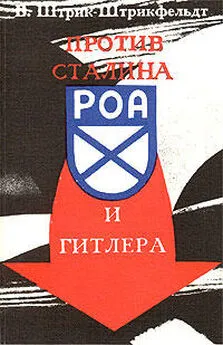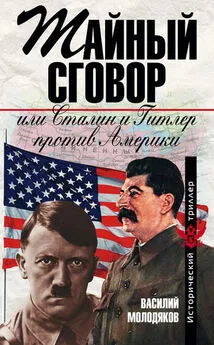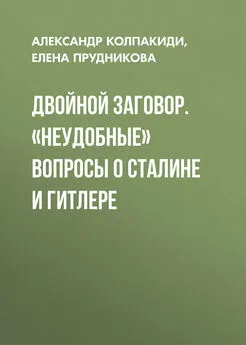Ричард Овери - Сталин и Гитлер
- Название:Сталин и Гитлер
- Автор:
- Жанр:
- Издательство:АСТ
- Год:2015
- Город:Москва
- ISBN:978-5-17-082961-3
- Рейтинг:
- Избранное:Добавить в избранное
-
Отзывы:
-
Ваша оценка:
Ричард Овери - Сталин и Гитлер краткое содержание
Что это были за личности?
Какими были методы их правления?
В чем мораль диктатуры как таковой и к чему она ведет?
На эти и другие наболевшие вопросы отвечает известный британский историк, автор крупных работ по истории Второй мировой войны Ричард Овери.
При сравнение и сопоставление двух режимов Овери рассматривает степень и характер народной поддержки, очаги противостояния и сопротивления, путь к власти каждого из диктаторов и процесс формирования культа личности и т. д.
Сталин и Гитлер - читать онлайн бесплатно полную версию (весь текст целиком)
Интервал:
Закладка:
Bailes, K. E. ‘The American Connection: Ideology and the Transfer of American Technology to the Soviet Union, 1917–1941’, Comparative Studies in Society and History, 23 (1981), pp. 421–48.
Bailes, K. E. ‘Stalin and the Making of a New Elite: A Comment’, Slavic Review, 39 (1980), pp. 286–9.
Bailes, K. E. Technology and Society under Lenin and Stalin: Origins of the Soviet Technical Intelligentsia (Princeton, NJ, 1978).
Baird, J. W. To Die for Germany: Heroes in the Nazi Pantheon (Bloomington, Ind., 1990).
Bajohr, F. ‘Arisierung’ in Hamburg; Die Verdrängung der jüdischen Unternehmer 1933–1945 (Hamburg, 1997).
Bajohr, F. Parvenüs und Profi teure. Korruption in der NS-Zeit (Frankfurt am Main, 2001).
Bakels, F. B. Nacht und Nebel: Das Bericht eines holländischen Christen aus deutschen Gefängnissen und Konzentrationslagern (Frankfurt am Main, 1979).
Baldauf, I. ‘Some Thoughts on the Making of the Uzbek Nation’, Cahiers du monde russe, 32 (1991), pp. 79–96.
Balderston, T. Economics and Politics in the Weimar Republic (Cambridge, 2002).
Balfour, M. Withstanding Hitler in Germany 1933–1945 (London, 1988).
Ball, A. M. Russia’s Last Capitalists: The Nepmen, 1921–1929 (Berkeley, Calif., 1987).
Banach, J. Heydrichs Elite: Das Führerkorps der Sicherheitspolizei und des SD 1936–1945 (Paderborn, 1998).
Barber, J. ‘The Moscow Crisis of October 1941’, in J. Cooper, M. Perrie and E. A. Rees (eds) Soviet History 1917–1953: Essays in
Honour of R. W. Davies (London, 1995).
Barber, J. and Harrison, M. (eds) The Soviet Defence-Industry Complex from Stalin to Khrushchev (London, 2000).
Barber, J. and Harrison, M. The Soviet Home Front 1941–1945 (London, 1991).
Barkai, A. From Boycott to Annihilation: The Economic Struggle of German Jews, 1933–1943 (Hannover, NJ, 1989).
Barkai, A. Nazi Economics: Ideology, Theory, and Policy (Oxford, 1990).
Barnes, J. J. and Barnes, P. P. Hitler’s Mein Kampf: Britain and America: a Publishing History 1930–39 (Cambridge, 1980).
Barnett, V. For the Soul of the People: Protestant Protest against Hitler (Oxford, 1992).
Barnett, V. Kondratiev and the Dynamics of Economic Development: Long Cycles and Industrial Growth in Historical Context (London, 1998).
Barron, S. (ed.) ‘Degenerate Art’: The Fate of the Avant-Garde in Nazi Germany (New York, 1991).
Barros, J. and Gregor, R. Double Deception: Stalin, Hitler and the Invasion of Russia (Dekalb, Ill., 1995).
Bärsch, C.-E. Die politische Religion des Nationalsozialismus (Munich, 1998).
Bartlett, R. Wagner in Russia (Cambridge, 1995).
Bartov, O. The Eastern Front 1941–1945: German Troops and the Barbarization of Warfare (New York, 1985).
Bartov, O. Hitler’s Army: Soldiers, Nazis and War in the Third Reich (Oxford, 1991).
Bartov, O. The Missing Years: German Workers, German Soldiers’, in D. Crew (ed.) Nazism and German Society 1933–1945
(London, 1994), pp. 41–66.
Bashalov, A. General Vlasov – predatel’ ili geroi? (St Petersburg, 1994).
Baykov, A. The Development of the Soviet Economic System (Cambridge, 1947).
Beachley, D. R. ‘Soviet Radio-Electronic Combat in World War II’, Military Review, 61 (1981), pp.???.
Beaumont, J. Comrades in Arms: British Aid to Russia 1941–1945 (London, 1980).
Beetham, D. Max Weber and the Theory of Modern Politics (London, 1974).
Behrenbeck, S. Der Kult um die toten Helden: nationalsozialistische Mythen, Riten und Symbole (Vierow bei Greifswald, 1996).
Beier, G. Die illegale Reichsleitung der Gewerkschaften 1933–1945 (Cologne, 1981).
Beirne, P. (ed.) Revolution in Law: Contributions to the Development of Soviet Legal Theory, 1917–1938 (New York, 1990).
Bendersky, J. W. Carl Schmitt: Theorist for the Reich (Princeton, NJ, 1983).
Benvenuti, F. ‘A Stalinist Victim of Stalinism: “Sergo” Ordzhonikidze’, in J. Cooper, M. Perrie and E. A. Rees (eds) Soviet History 1917–1953: Essays in Honour of R. W. Davies (London, 1995), pp. 134–57.
Benvenuti, F. ‘Industry and Purge in the Donbass 1936–37’, Europe – Asia Studies, 45 (1993), pp. 57–78.
Bergan, R. Sergei Eisenstein: a Life in Confl ict (New York, 1997).
Bergen, D. ‘The Nazi Concept of the Volksdeutsche and the Exacerbation of Anti-Semitism in Eastern Europe 1939–1945’, Journal of
Contemporary History, 29 (1994), pp. 569–82.
Berghahn, V. Der Stahlhelm: Bund der Frontsoldaten 1918–1935 (Düsseldorf, 1966).
Bergmeier, H. and Lotz, R. E. Hitler’s Airwaves: the Inside Story of Nazi Radio Broadcasting and Propaganda Swing (New
Haven, Conn., 1997).
Berschel, H. Bürokratie und Terror: Das Judenreferat der Gestapo Düsseldorf 1935–1945 (Essen, 2001).
Berthold, W. Die 42 Attentate auf Adolf Hitler (Wiesbaden, 2000).
Berton, K. Moscow: An Architectural History (London, 1977).
Bessel, R. Germany after the First World War (Oxford, 1993).
Bessel, R. (ed.) Life in the Third Reich (Oxford, 2001).
Beyerchen, A. ‘Rational Means and Irrational Ends. Thoughts on the Technology of Racism in the Third Reich’, Central European History, 30 (1997), pp. 386–440.
Bezyminsky, L. A. ‘Stalins Rede vom 5. Mai 1941 – neu dokumentiert’, in G. R. Ueberschär, and L. A. Bezyminsky (eds) Der deutsche Angriff auf die Sowjetunion 1941 (Darmstadt, 1998).
Biesemann, J. Das Ermächtigungsgesetz als Grundlage der Gesetzgebung im nationalsozialistischen Staat (Münster, 1985).
Bilas, I. ‘Le KGB et la destruction de l’église catholique ukrainienne’, L’est européen, 31 (1993), pp. 50–63.
Billington, J. H. The Face of Russia (New York, 1998).
Birken, L. Hitler as Philosophe: Remnants of the Enlightenment in National Socialism (Westport, Conn., 1995).
Birkenfeld, W. ‘Stalin als Wirtschaftsplaner Hitlers’, Vierteljahrshefte für Zeitgeschichte, 51 (1966), pp.???
Blakely, A. Russia and the Negro (Washington, DC, 1986).
Blank, S. ‘Soviet Institutional Development during NEP: A Prelude to Stalin’, Russian History, 9 (1982), pp. 325–46.
Blasius, D. Carl Schmitt: Preussischer Staatsrat im Hitlers Reich (Göttingen, 2001).
Bleuel, P. Strength through Joy: Sex and Society in Nazi Germany (London, 1973).
Bloch, M. Ribbentrop (London, 1992).
Boas, J. Boulevard des misères: The Story of Transit Camp Westerbork (Hamden, Conn., 1985).
Bociorkiw, B. R. ‘Religion and Atheism in Soviet Society’, in R. H. Marshall Aspects of Religion in the Soviet Union 1917–1967 (Chicago, 1971).
Bock, G. ‘Racism and Sexism in Nazi Germany: Motherhood, Compulsory Sterilization and the State’, in R. Bridenthal, A. Grossmann and M. Kaplan (eds) When Biology became Destiny: Women in Weimar Germany and Nazi Germany (New York, 1984).
Bonnell, V. Iconography of Power: Soviet Political Posters under Lenin and Stalin (Berkeley, Calif., 1997).
Boog, H. etal. Der Angriff auf die Sowjetunion (Stuttgart, 1983).
Bordiugov, G. A. ‘The Bolsheviks and the National Banner’, Russian Studies in History, 39 (2000), pp. 79–90.
Bordiugov, G. A. ‘The Transformation of the Policy of Extraordinary Measures into a Permanent System of Government’, in N.
Rosenfeldt, B. Jensen and E. Kulavig (eds) Mechanisms of Power in the Soviet Union (London, 2000), pp. 122–44.
Boshyk, Y. (ed.) Ukraine During World War II: History and its Aftermath (Edmonton, Alberta, 1986).
Boterbloem, K. Life and Death under Stalin: Kalinin Province, 1945–1953 (Montreal, 1999).
Bougai, N. The Deportation of Peoples in the Soviet Union (New York, 1996).
Bourdeaux, M. Opium of the People: the Christian Religion in the USSR (London, 1965).
Bowlt, J. and Drutt, M. (eds) Amazons of the Avant-Garde (Royal Academy, London, 1999).
Bracher, K. D. The German Dictatorship: the Origins, Structure, and Effects of National Socialism (London, 1971).
Brahm, H. (ed.) Opposition in der Sowjetunion (Düsseldorf, 1972).
Brandenberger, D. National Bolshevism: Stalinist Mass Culture and the Formation of Modern Russian National Identity 1931–1956 (Cambridge, Mass., 2002).
Brandenberger, D. and Dubrovsky, A. ‘“The People need a Tsar”: the Emergence of National Bolshevism as Stalinist Ideology 1931–1941’, Europe – Asia Studies, 50 (1998), pp. 873–92.
Brechtefeld, J. Mitteleuropa and German Politics: 1848 to the Present (London, 1996).
Brenner, M. After the Holocaust: Rebuilding Jewish Lives in Postwar Germany (Princeton, NJ, 1997).
Bridenthal, R., Grossmann, A. and Kaplan, M. (eds) When Biology became Destiny: Women in Weimar Germany and Nazi Germany (New York, 1984).
Brooks, J. ‘Socialist Realism in Pravda: Read All About It!’, Slavic Review, 53 (1994), pp. 973–91.
Brossat, A. (ed.) Ozerlag, 1937–1964. Le Système du Goulag: traces perdues, mémoires reveilles d’un camp stalinien (Paris, 1991).
Broszat, M. Hitler and the Collapse of Weimar Germany (Leamington Spa, 1987).
Broszat, M. The Hitler State: the foundation and development of the internal structure of the Third Reich (London, 1981).
Brotherstone, T. and Dukes, P. (eds) The Trotsky Reappraisal (Edinburgh, 1992).
Browder, G. C. Foundations of the Nazi Police State: the Formation of Sipo and SD (Lexington, Ky, 1990).
Browning, C. ‘Hitler and the Euphoria of Victory: the Path to the Final Solution’, in D. Cesarani (ed.) The Final Solution: Origins and Implementation (London, 1994), pp. 137–47.
Browning, C. Ordinary Men: Reserve Police Battalion 101 and the Final Solution (Cambridge, 1992).
Browning, C. The Path to Genocide: Essays on Launching the Final Solution (Cambridge, 1992).
Brumfi eld, W. C. A History of Russian Architecture (Cambridge, 1993).
Brunner, G. Das Parteistatut der KPdSU 1903–1961 (Cologne, 1965).
Brustein. W. The Logic of Evil: The Social Origins of the Nazi Party 1925–1933 (New Haven, Conn., 1996).
Buckley, M. Women and Ideology in the Soviet Union (New York, 1989).
Bullock, A. Hitler and Stalin: Parallel Lives (London, 1991).
Burbank, J. ‘Lenin and the Law in Revolutionary Russia’, Slavic Review, 54 (1995) pp. 23–44.
Burden, H. T. The Nuremberg Party Rallies: 1923–39 (London, 1967).
Burleigh, M. Death and Deliverance: ‘Euthanasia’ in Germany 1900–1945 (Cambridge, 1994).
Burleigh, M. Ethics and Extermination: Refl ections on Nazi Genocide (Cambridge, 1997).
Burleigh, M. ‘National Socialism as a Political Religion’, Totalitarian Movements and Political Religions, 1 (2000), pp. 1–26.
Burleigh, M. The Third Reich: a New History (London, 2000).
Burleigh, M. and Wippermann, W. The Racial State: Germany 1933–1945 (Cambridge, 1991).
Butler, R. An Illustrated History of the Gestapo (London, 1992).
Butler, W. E. Soviet Law (2nd edn, London, 1988).
Campbell, B. The SA Generals and the Rise of Nazism (Lexington, Ky, 1998).
Caplan, J. ‘National Socialism and the Theory of the State’, in T. Childers, and J. Caplan (eds) Reevaluating the Third Reich (New
York, 1993), pp. 98–113.
Carlebach, E. Tote auf Urlaub: Kommunist in Deutschland, Dachau und Buchenwald 1937–1945 (Bonn, 1995).
Caroe, O. Soviet Empire: the Turks of Central Asia and Stalinism (London, 1967).
Carsten, F. L. The German Workers and the Nazis (Aldershot, 1995).
Cary, N. D. ‘Antisemitism, Everyday Life, and the Devastation of Public Morals in Nazi Germany’, Central European History, 55 (2002), pp. 551–89.
Cassinelli, C. W. Total Revolution: A Comparative Study of Germany under Hitler, the Soviet Union under Stalin and China under Mao (Santa Barbara, Calif., 1976).
Читать дальшеИнтервал:
Закладка:







